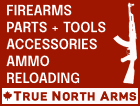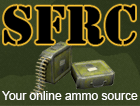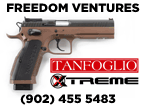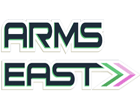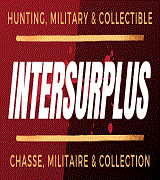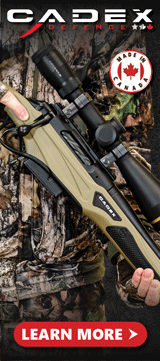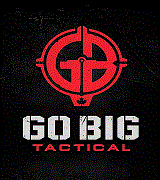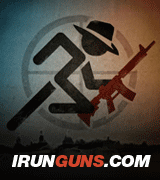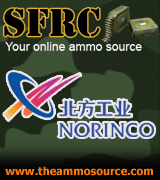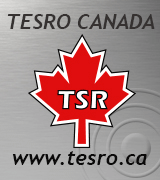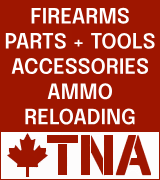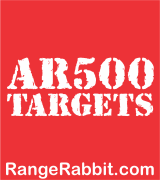The following is not to be relied on as legal advice nor is it intended to be insulting to anyone else in this thread:
With respect, when dealing with legal matters
one needs to reference the source material.
The Short Answer:
A "trench knife" (or any other variation of the name) is not prescribed to be a prohibited weapon by name. It is considered to be a prohibited weapon because the handle is considered to a device that is similar to "Brass Knuckles", consisting of a band of metal with one or more finger holes designed to fit over the fingers of the hand. (
https://laws-lois.justice.gc.ca/eng... to fit over the fingers of the hand.,-PART 4)
Therefore, if a "trench knife" was created with a handle consisting of a non-metal material that knife would not be considered a prohibited weapon. One cannot say that it would be considered a prohibited weapon because it is a variant of a "trench knife", as a "trench knife" is not prescribed by name to be a prohibited weapon under the
Regulations Prescribing Certain Firearms and Other Weapons, Components and Parts of Weapons, Accessories, Cartridge Magazines, Ammunition and Projectiles as Prohibited or Restricted (SOR/98-462). (
https://laws-lois.justice.gc.ca/eng...page-2.html#:~:text=PART 3,Prohibited Weapons)
The Long Answer:
A prohibited weapon is defined within the interpretation section of section 84 of the Criminal Code of Canada. It is defined in the following manner:
"
prohibited weapon means
(a) a knife that has a blade that opens automatically by gravity or centrifugal force or by hand pressure applied to a button, spring or other device in or attached to the handle of the knife, or
(b) any weapon, other than a firearm, that is prescribed to be a prohibited weapon; (arme prohibée)"
Part (a) clearly does not apply to a trench knife; but does part (b)?
Weapons that are prescribed to be prohibited weapons are listed in the
Regulations Prescribing Certain Firearms and Other Weapons, Components and Parts of Weapons, Accessories, Cartridge Magazines, Ammunition and Projectiles as Prohibited or Restricted (SOR/98-462) and/or the
Criminal Code of Canada.
(
https://laws-lois.justice.gc.ca/eng...page-2.html#:~:text=PART 3,Prohibited Weapons &
https://laws-lois.justice.gc.ca/eng/acts/c-46/)
A "trench knife" (or any variation of that name) is not named in these regulations or the code. The regulations do however list a device known as "Brass Knuckles" to be a prohibited weapon. Please see below:
"
Former Prohibited Weapons Order, No. 8
15 The device known as “
Brass Knuckles”
and any similar device consisting of a band of
metal with one or more finger holes designed to fit over the fingers of the hand." (bolding and underlining added for emphasis)
(
https://laws-lois.justice.gc.ca/eng... to fit over the fingers of the hand.,-PART 4)
The handle of a "trench knife" is considered to a device that is similar to "Brass Knuckles", consisting of a band of metal with one or more finger holes designed to fit over the fingers of the hand. Therefore, a "trench knife" is considered to be a prohibited weapon.
Therefore, if a "trench knife" was created with a handle consisting of a non-metal material that knife would not be considered a prohibited weapon. One cannot say that it would be considered a prohibited weapon because it is a variant of a "trench knife", as a "trench knife" is not prescribed by name to be a prohibited weapon under the
Regulations Prescribing Certain Firearms and Other Weapons, Components and Parts of Weapons, Accessories, Cartridge Magazines, Ammunition and Projectiles as Prohibited or Restricted (SOR/98-462) or the
Criminal Code of Canada. (
https://laws-lois.justice.gc.ca/eng...page-2.html#:~:text=PART 3,Prohibited Weapons)
Having said that, if such a knife was created and if it garnered a significant amount of negative attention, the proper authority could prescribe the knife to be a prohibited weapon in the future.
Furthermore,
one may encounter issues with sections 88, 89, and 90 of the Criminal Code of Canada depending on the circumstances that one may possess such a knife in. This is because a "trench knife" was designed solely to be a weapon. I will not provide a definitive source for this; it is common knowledge and there are various sources available which will attest to this. I believe an argument that a "trench knife" is a tool and
not a "weapon", as defined in the Criminal Code of Canada, would be unsuccessful. The term "weapon" is defined in section 2 of the Criminal Code of Canada in the following manner:
"
weapon means any thing used,
designed to be used or intended for use
(a) in causing death or injury to any person, or
(b) for the purpose of threatening or intimidating any person
and, without restricting the generality of the foregoing, includes a firearm and, for the purposes of sections 88, 267 and 272, any thing used, designed to be used or intended for use in binding or tying up a person against their will; (arme)" (underlining added for emphasis)
(
Does this mean that you could not carry such a knife in public? Not necessarily; it depends on your intentions, whether it is carried in the open, and whether it is brought to a public meeting.
We could continue this discussion further, but I believe that this suffices.
Best regards,
MP2011
